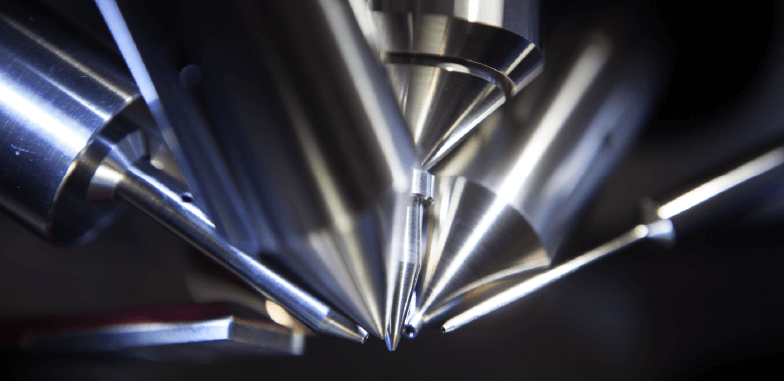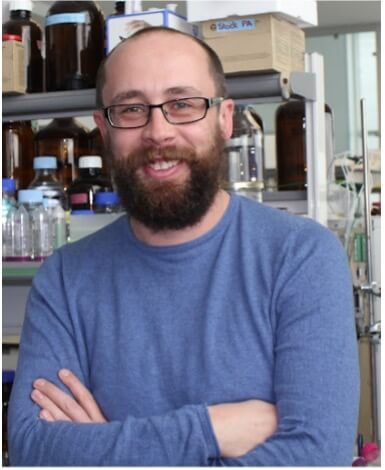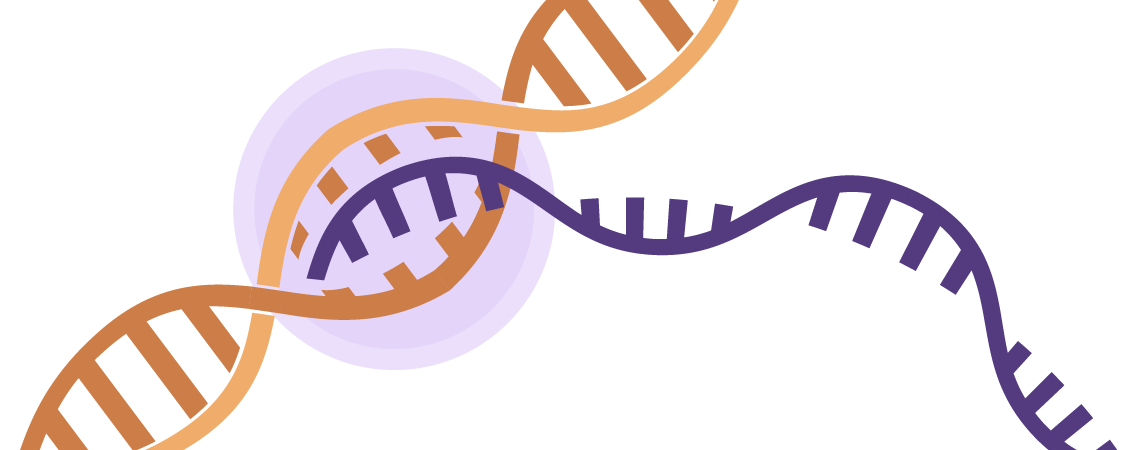<< Back to MOTIFvations Blog Home Page
Mass Spectrometry – Attaining Massive Amounts of Histone Modification Data from Small Clinical Samples

November 9, 2022
Table of Contents:
-
Introduction: The Problem of Histone Modification Profiling in Clinical Samples
-
Mass Spectrometry – A Small Step Towards a Massive Solution
-
Scaling Down Mass Spectrometry-based Analysis for Clinical Samples
-
The “In-gel PRO-PIC” Digestion Protocol – A First Step
-
Demonstrating Proof-of-Concept with Human Breast Cancer Samples
-
Conclusions – Mass Spectrometry as the Way Forward for Histone Modification Profiling in Clinical Samples
Introduction: The Problem of Histone Modification Profiling in Clinical Samples
Quantifying histone modification levels in clinical samples may provide a means to identify novel, disease-specific epigenetic mechanisms, create patient-specific therapeutic strategies, and stratify patients into distinct treatment groups. While easy-to-grow cell lines offer a wealth of material for epigenetic analysis using conventional histone modification detection methods, working with the vanishingly small amounts of clinical samples generally available requires the application of more efficient and precise techniques. Extracting, separating, and quantifying proteins from clinical samples presents continuing challenges, mostly related to the manual manipulation of small volumes and tissue areas. In cancer research, the ability to profile histone modifications in small cell samples could provide vast amounts of data supporting the analysis of early cancer lesions, micro-metastases, intratumor heterogeneity, tumor therapeutic responses, and the interplay between tumor cell subpopulations.
Mass Spectrometry – A Small Step Towards a Massive Solution
Researchers from the laboratories of Roberta Noberini and Tiziana Bonaldi (European Institute of Oncology IRCCS, Milan, Italy) previously developed histone enrichment methods that supported the analysis of histone modifications in patient-derived formalin-fixed paraffin-embedded (FFPE) tissues, frozen tissues, and primary cells (Colzani et al., 2014, Noberini et al., 2017, Noberini et al., 2020, and Restellini et al., 2019). Significantly, their approach took advantage of mass spectrometry, an analytical tool that measures the mass-to-charge ratio of molecules present in a sample, which can be used to identify the components of the sample. Of note, mass spectrometry-based approaches require separate processing protocols for histone H3 (digested in-gel (Colzani et al., 2014)) and histone H4 (digested in-solution (Restellini et al., 2018)) to maximize the coverage of commonly assayed histone modifications. The ability to monitor dozens of histone H3 and H4 modifications using this method has allowed researchers to observe changes, and to discover unexpected changes which may be even more informative.
Scaling Down Mass Spectrometry-based Analysis for Clinical Samples
The clinical application of mass spectroscopy-based methods has already supported the identification of distinct epigenetic patterns when comparing tumor and normal tissues (Noberini et al., 2019) and various breast cancer subtypes (Fowler et al., 2011); however, the substantial amount of starting material required for a detailed analysis remains a significant limiting factor. While the use of manually/laser micro-dissected tumor areas has scaled down the cell number requirement to around 500,000 cells (Noberini et al., 2017), this value remains above the number of cells generally obtained from clinical samples. To solve this problem, Noberini and colleagues now describe the development of a protocol that supports the analysis of histone modifications/histone peptides (mainly methylation and acetylation) from laser micro-dissected tissue areas corresponding to around 1,000 cells (Noberini et al., 2021). Overall, the authors propose that their efficient and sensitive mass spectrometry-based approach has the potential to provide massive amounts of histone modification data from small-sized clinical samples.
The “In-gel PRO-PIC” Digestion Protocol – A First Step
The authors developed an efficient in-gel digestion protocol (PRO-PIC) for the mass spectrometry-based detection of histone modifications in protein samples from low-abundance clinical samples. This approach eliminates mass spectroscopy contaminants associated with in-solution digestion, decreases the amount of tissue employed, supports the quantitation of a higher number of modified peptides, and increases the detection of low-abundance histone modifications compared to other related techniques. Overall, the in-gel PRO-PIC protocol allowed the detection of challenging-to-analyze histone modifications (e.g., H3K4me2/me3 or modified H4K20), made distinctions between commonly acetylated lysine residues (e.g., H3K27ac, H3K36ac, and H3K37ac), and supported the detection of up to thirty-eight histone modifications from only 5 ng of peptides isolated from a triple negative breast cancer cell nuclear extract. Furthermore, histone modification alterations induced after the treatment of triple negative breast cancer cells with a histone deacetylase inhibitor could be easily and repeatedly visualized by mass spectroscopy as a general increase in acetylated histone-derived peptides.
The following evaluation steps applied the in-gel PRO-PIC protocol to manually macro-dissected (500,000 and 100,000 cells), laser micro-dissected (20,000, 5,000, 2,500, and 1,000 cells), and FFPE mouse pancreatic tissue sections for mass spectrometry-based analysis. Encouragingly, the developed protocol supported the detection of most histone modifications from both large and small amounts of cells; furthermore, the authors noted the extremely high correlation of peptide ratios for all conditions. These proof-of-concept findings suggested that the proposed mass spectroscopy workflow involving PRO-PIC digestion could be readily applied to very small tissue areas, enabling data to be gathered from difficult to obtain samples.
Demonstrating Proof-of-Concept with Human Breast Cancer Samples
The final proof-of-concept experiments involved applying the in-gel PRO-PIC protocol to isolated frozen laser-micro-dissected tissues from Luminal A-subtype breast cancer patients, which included various tumor and adjacent normal tissue regions. Overall, they observed the loss of H3K14ac, monoacetylated H4, and H4K20me3, and a decrease in acetylated H3 peptide in all tumor regions; of note, H3K9/K14 and H4 tail acetylation levels displayed heterogeneous levels. Interestingly, levels of a tetra-acetylated histone H4 tail peptide displayed an increase in Luminal A tumor tissues; however, the levels of this peptide displayed differences across tumor samples. Furthermore, the authors failed to detect this altered pattern of histone modifications in triple-negative breast cancer or ovarian or head and neck tumors, suggesting that increased levels of the tetra-acetylated histone H4 tail peptide appeared tumor subtype-specific and distinguished different areas within the same tumor.
Finally, the authors evaluated tissue heterogeneity in samples obtained from triple-negative breast cancer patients by evaluating areas containing tumor cells, tumor-infiltrating lymphocytes, and lymphocytes from outside the tumor region. Tumor cells displayed a decrease in H4K20me3 levels and an increase in unmodified H3 and H4 peptides, a pattern also identified when comparing tumor and normal cells that may be explained by the highly proliferative nature of tumor cells. Compared to lymphocytes, tumor cells displayed increased levels of the tetra-acetylated histone H4 tail peptide; however, the two different lymphocyte types remained similar at the histone modification level except for the tetra-acetylated histone H4 tail peptide.
Conclusions – Mass Spectrometry as the Way Forward for Histone Modification Profiling in Clinical Samples
Overall, this fascinating study suggests the technical feasibility of a mass spectroscopy approach to achieving massive amounts of histone modification data from clinical samples of small sizes. The proven ability of this technique to profile histone modification levels in tumor subpopulations, described for the first time, may permit the field to make massive strides forward in our understanding of tumor metastasis, intratumor heterogeneity, therapeutic responses by tumors, and the role of tumor subpopulation interactions in driving tumorigenesis and identifying potentially useful biomarkers.
Can Active Motif Help Your Research with Mass Spectrometry?
If this mass spectroscopy study piqued your interest, check out the Mod Spec® Service available from Active Motif. Mod Spec® can measure the relative abundance of more than eighty different histone modifications and allows the detection of epigenetic changes occurring in response to disease or treatment. Meanwhile, the recently developed RIME (Rapid Immunoprecipitation Mass spectrometry of Endogenous proteins) technique can help identify transcriptional co-factors and chromatin-associated proteins.
To understand how to attain a massive amount of histone modification data from vanishingly small samples, see Clinical Epigenetics, July 2021.
About the author

Stuart P. Atkinson, Ph.D.
Stuart was born and grew up in the idyllic town of Lanark (Scotland). He later studied biochemistry at the University of Strathclyde in Glasgow (Scotland) before gaining his Ph.D. in medical oncology; his thesis described the epigenetic regulation of the telomerase gene promoters in cancer cells. Following Post-doctoral stays in Newcastle (England) and Valencia (Spain) where his varied research aims included the exploration of epigenetics in embryonic and induced pluripotent stem cells, Stuart moved into project management and scientific writing/editing where his current interests include polymer chemistry, cancer research, regenerative medicine, and epigenetics. While not glued to his laptop, Stuart enjoys exploring the Spanish mountains and coastlines (and everywhere in between) and the food and drink that it provides!
Contact Stuart on Twitter with any questions
Related Articles
3’-Digital Gene Expression (3’-DGE) Sequencing: High Through-put at Low Cost
June 14, 2022
The RNA-Seq workflow normally begins with the isolation of RNA and continues with library prep. But RNA can be scary to work with! The scourge of lurking RNases has caused countless restless nights for researchers planning their first (or hundredth!) RNA extraction. Read about an alternative method of library prep, 3'-Digital Gene Expression (3'-DGE) which reduces sequencing depth requirements, the cost of sequencing, and has the potential to deliver good differential gene expression results where conventional RNA-Seq might fail.
Read More
DNA Methylation in Cell-free DNA (cfDNA): Benefits, Limitations & Future Potential for Precision Medicine
November 2, 2021
What do we mean when they say “cell free” DNA, and why is this emerging as a potentially invaluable tool for precision medicine?
Read More
<< Back to MOTIFvations Blog Home Page








